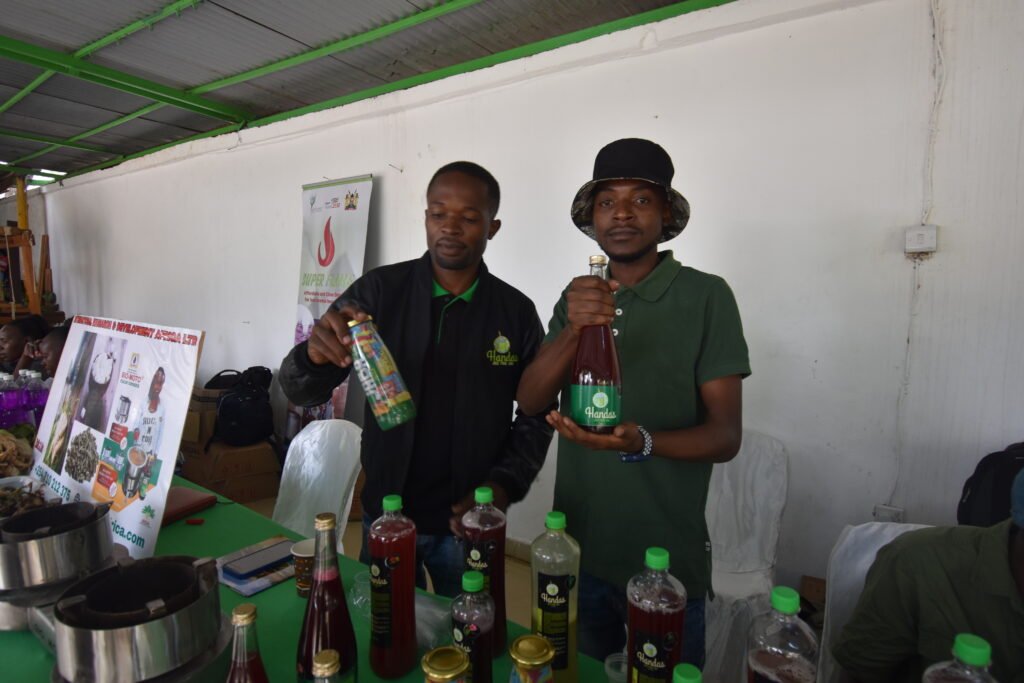By Zablon Oyugi
For many years, the most common way users have enjoyed khat—locally known as miraa or jaba— has been by chewing its leaves and tender twigs to relish its juice. The chewing has made most of them to appear untidy, as their mouths remain consistently filled with a tightly packed mass of chewed substance.
Chewing khat is also largely unwelcome in offices or other formal places and gatherings. However, this is slowly becoming a thing of the past following various efforts to better khat (popularly known as miraa locally) marketing through improved regulations and policies and now, through value addition.
Brian James, a young entrepreneur from Nairobi’s Langata area, ventured into khat juice production in 2019 not only eliminate the stigma for khat lovers but also provide a product whose use is not restricted to certain areas. “Before, I used to sell miraa leaves and twigs to the locals customers but I realised that there was a growing segment of the stimulant lovers who did not like chewing but would like it in a form they could take anywhere with them and use without feeling ashamed,” said Brian. This birthed Handas Juice, a venture that specialises in khat value addition. The start-up uses hydraulic press machine to extract the khat juice by cold press (without the use of heat and chemicals).
The extract is then flavoured by adding other rich ingredients such as hibiscus, strawberry, passion, pinacolad and apple extracts to add colour. “We also have the Sparkling Jaba Juice which is carbonated and it is the first one of its kind in the country based on our market research,”
said James Lito, the Handas Juice manager.
Market Their products are packed in various bottles branded Handas Jaba Juice and then sold to customers in various wines and spirit shops in Nairobi, Mombasa, Eldoret and other towns. They are also exporting their products to Ethiopia’s Addis Ababa and Zanzibar Island of Tanzania. “We have been able to improve bit by bit from our first product by looking at customer preferences and their feedback,” said Aluda Misoga, the enterprise’s branch manager at Roisambu location in Nairobi.
“Our products can also be bought online directly through our website or orders sent to our various social media platforms.” Challenges Lito says one of the major challenges they are facing is the lack of policies and standards by the government to help streamline the miraa products market, something that has been hindering them from exploring formal markets such as the supermarkets and high-end entertainment joints.
“Regulatory gaps remain a major challenge, preventing us from standardising our products, as there are still no specific regulations for khat value-added products in the country,” says Lito. In 2021, the Ministry of Agriculture developed Regulatory Impact Statement for the proposed Crops (Miraa) Regulations 2021 for development, promotion and regulation of miraa value chains for the benefit of farmers and stakeholders in the industry. The regulations also required the Agriculture and Food Authority (AFA), the Kenyan crops regulator, to work with county governments to promote the development of the miraa industry.
In 2022, the state introduced new regulations – The Crops (Miraa) (Amendments) Regulations, 2022 – to govern the production and trade in khat. According to the then AFA Acting Director for Pyrethrum, Miraa and Industrial Crops Directorate, Felix Mutwiri, traders were to be supported to embrace modern technology such as cold storage sheds at the collection centres as well as have refrigerated or aerated vehicles to transport miraa crop. Lito said that the proposal was a good move as it would have enabled them to receive the produce while still fresh.
“Miraa is a highly perishable crop, if it gets to us late, it sometimes produces undesirable flavours thus we have to spend much time sourcing for the quality raw materials that has to be transported for processing in time,” he said. Although value-added miraa products have yet to receive the standard specifications hoped for by Brian James and others venturing into miraa processing, the government appears to be making steady progress on putting the needed policies in place.
Towards the end of last year, AFA documented the various miraa grades to help farmers produce, sort and grade their produce to meet the specific needs of different markets. In a publication dated October 3, 2024, the authority specified that different grades of miraa with their unique characteristics, including the number of leaves, length, nodes, and colour. This was meant to help consumers identify their preferences based on various factors, primarily taste and price. About 80 percent of locally produced miraa is consumed locally, while 20 percent is exported.

